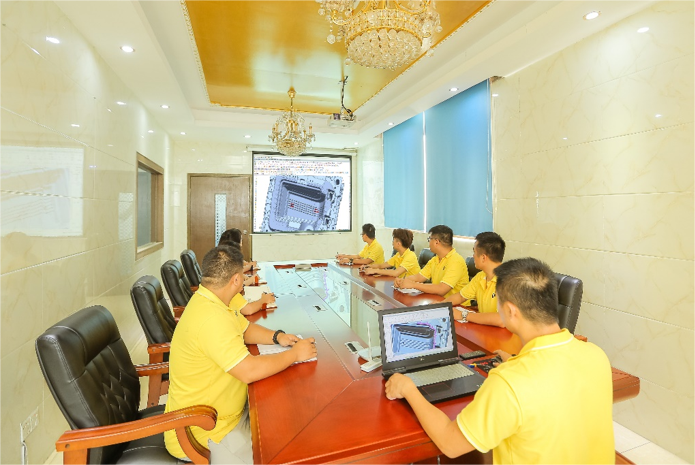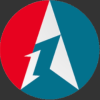|
11 audit Procedures for Mold Drawing
When we get customer-designed product drawings or are supplied plastic products, our engineers examine and review the products’ structures before creating corresponding Mold drawings. Engineers will consider the 11 aspects below when creating Mold Drawings for the program, to guarantee the trial’s success and the accuracy of the mold.
1. Injection Mold MachineWhether the injection molding machine’s injection volume, injection pressure, and clamping force are adequate The suitability of the mold for installation on the chosen injection molding machine. if the mold’s dimensions and placement—for example, the mold’s screw hole, mold slot, positioning ring, top pin hole, and other details—meet those required by the specific injection molding machine.
Whether the core cavity size has increased the shrinkage rate, whether there is a mirror image when the product picture changes to the core cavity picture, and whether the plastic component drawing is scaled to 1:1. Whether the plastic’s shrinkage rate was properly chosen. Is the draft angle taken into account while determining the size of the core cavity, whether it be the large or small end size? Is it simple to process the core and cavity based on the structure of the plastic part as it is now? Whether the parting line is properly positioned, whether it will adhere to the mold, how the parting surface was processed, and whether there are any sharp edges or corners. Whether an inlaid structure has been adopted for easily damaged parts and difficult to process.
3. Steel Internal Mold Insert In Mold DrawingDetermine whether the internal mold insert’s composition, degree of precision, hardness, and other characteristics meet the needs of the plastic, batches of plastic components, and customers.
Whether the selected demolding method is appropriate in Mold Drawing. Whether the number and position of push rods and push tubes (as large as possible, pushed on the bone) are appropriate Whether it is necessary to increase the top stick hole Whether the push tube touches the top stick hole When there is a push rod under the side core puller, is there any additional travel switch or another first reset mechanism on the push-piece fixing plate? Whether the push rod on the slope is designed with a stepped groove to prevent slipping.
Whether the cooling channels are the right size, number, and position. Are water pipe joints subject to any specifications. Whether the mold has to have a heat insulation board for creating plastic parts consisting of PMMA, PC, nylon, and glass fiber materials. Will the push parts be hampered by the cooling water pipelines and screw holes.
Whether the cooling channels are the right size, number, and position. Are water pipe joints subject to any specifications? Whether the mold has to have a heat insulation board for creating plastic parts consisting of PMMA, PC, nylon, and glass fiber materials. Will the push parts be hampered by the cooling water pipelines and screw holes?
Whether the positional relationship of the three views conforms to the projection relationship, and whether the drawing is concise and clear. Is there a clear positioning reference for plastic parts on the mold? Mould parts should use standard parts as much as possible to facilitate manufacturing and maintenance. Whether the technical requirements are clear and correct. Whether the section line density and direction of the same part in each view are consistent, and whether the section symbol corresponds to the section drawing. Whether the dimension in the height direction is marked by a unified reference plane. Whether the dimensions are clear enough, and whether there is overlapping of alphanumeric lines. Whether there is magnification at the fine structure. Whether the assembly position of each part of the mold is firm and reliable, and whether the processing is simple and easy. Whether the tolerance of plastic parts is conducive to correction after mold trial.
Whether the drawing is clear and clear, and whether the size is consistent with the drawing. Whether the accuracy, surface roughness, tolerance fit, etc. of the necessary positions have been indicated. The structure of bumps and penetrations and the size of the pillow should be carefully checked with the drawings of the plastic parts. Whether the possibility of correction has been considered in places where the accuracy of molded plastic parts is particularly strict. Is the dimensional accuracy required too high? Is the material selected for the parts suitable? Is there any clear instruction where heat treatment and surface treatment are required? Is it necessary to add exhaust grooves?
9. Configuration Basics in Mold DrawingWhen there are precise molds, push tubes, slanted push rods, and multiple push rods, is there a guiding column for the push-piece fixing plate? Is the mold opening sequence and mold opening distance guaranteed by the fixed-distance parting mechanism? Is designing the dynamic and fixed mold positioning mechanism necessary?
Check if the part’s name is accurate and its serial number corresponds to the assembly drawing. The content and quantity of the schedule, including any self-made additional components and screws, etc., should be complete whether the material name, specification, and/or other pieces are incorrectly written. Have you chosen standard parts to your needs, and are there any special models or requirements for the standard parts?
11. Other Aspects in Mold DrawingWhether the datum plane of processing and assembly has been fully considered in Mold Drawing. Whether to formulate operation guidance specifications for special operation occasions in Mold Drawing. Whether the relevant assembly precautions have been marked. For the convenience of assembly, handling, and general operations, whether to design appropriate screw holes for lifting rings and safety mechanisms. Is it necessary to add support columns to protect other structures on the outside of the mold?
|
|










